How to turn the high school “hamburger” essay into a university-level paper
It goes by many names: the 5-paragraph essay, three-tier paper, or 1-3-1 model, to name a few. Many of you know it as the “hamburger” essay – an easy-to-follow model for writing papers that’s often taught in North American high schools.
During my first semester of undergrad, I heard it again and again from my professors and TAs: don't submit a hamburger essay. "Forget everything you learned in high school," they told me, "university writing is different!"
I had always done well on my high school writing assignments. I thought essay writing in university would be a breeze. So, the idea of throwing away all my past knowledge and practice felt confusing and overwhelming. If I wasn’t supposed to write essays in university the same way I wrote them in high school, then how was I supposed to write at all? And where was I supposed to learn these mysterious new writing techniques, anyway?
Now, after many years of honing my academic writing skills and becoming a writing instructor myself, I’m here to say, loud and proud: I love the hamburger essay.
This is somewhat of a controversial statement in higher education. For years, many professors have condemned the “hamburger” model of essay writing, resenting its rules and restrictions. And while many of these critiques are valid, I believe there are too many valuable aspects of the hamburger essay to throw it away altogether. In fact, many of the same techniques that make a hamburger essay great, can also be used to craft a quality academic paper.
So no, you don’t need to “forget everything you learned in high school” when it comes time to write your first university essay! Keep reading to learn how you can use turn your high school hamburger essay into a strong university-level paper.

What is the hamburger essay?
The hamburger essay is well-known and well-loved because of its simple and easy to remember structure. If you're new to the hamburger essay, check out the diagram below to learn more about how it works.

In short, each ingredient of the hamburger represents a different paragraph of the essay. It starts with an introduction paragraph and ends with a conclusion paragraph, represented by the top and bottom buns, respectively. Just like a real burger bun, these paragraphs frame the juicy contents inside – the body paragraphs – which are each represented by a different topping: lettuce, tomato, or patty.
Pay attention to the order of toppings in the hamburger essay. The lettuce comes first; it’s light and flimsy, representing one of the lighter arguments of the paper. The tomato is somewhat more robust (in terms of argument), while the patty at the end is the true “meat” of the essay. Just like the toppings of a hamburger in real-life, the body paragraphs build on one another to fill out the paper, giving it substance and flavour.
How to use the hamburger model in university
If you’re already familiar with the hamburger or 5-paragraph essay model, there are many great aspects of it that you can keep and adapt in your university essay writing . Keep reading to learn how!
1. The top bun (a.k.a the introduction paragraph)
The hamburger essay begins with a strong introduction paragraph (the top bun) that sets up the rest of the paper and presents the essay’s primary thesis statement or argument. In high school, students are often taught to begin their introduction paragraph with the broadest or most general information first, and gradually narrow in on the specifics. They’re also taught to begin the introduction with a narrative hook – a catchy phrase or fact to grab the reader’s attention – and to end the introduction with a “road map,” which outlines what each paragraph of the essay will discuss, in the order of information presented.
Although at the university level, introductions may be longer than one paragraph (depending on the length of the essay overall), they should still begin with more general contextual information first, then narrow in on a more focused thesis statement . This structure helps guide the reader by presenting them with the background information they require for the thesis and body paragraphs to make sense.
You can also keep the introductory “hook” and “road map” pieces of the hamburger introduction, but note the differences in what these elements look like at the university level. While high school writers often try to catch the reader’s attention by asserting a universal or historical truth (e.g. “Since the dawn of time…” or “Throughout history…”), a hook at the university level should remain focused on the specific topic at hand – a surprising fact or statistic works well here.
Additionally, while a high school-level road map might outline the topic of each and every body paragraph in the essay, a university-level road map should be less detailed. Because university papers are typically longer than high school papers, it makes more sense to only mention the paper’s main overarching arguments (if at all) in the road map section, rather than summarize every paragraph.
To learn more about how to write a strong university-level introduction, check out this WCC resource on introductions.
2. The bottom bun (a.k.a. the conclusion paragraph)
The hamburger essay ends with a satisfying conclusion paragraph (the bottom bun) that summarizes its findings and wraps up the paper’s arguments. High school students are often taught to structure their conclusion paragraph in the reverse order of the introduction, beginning with the most specific information and broadening out to the most general . Hamburger essay conclusions often restate the thesis at the start of the paragraph, then go on to summarize each point of the essay.
At the university level, you should continue to structure your conclusion by presenting the most specific pieces of information related to your thesis first, followed by the more general ideas. Structuring your conclusion this way helps transition the reader out of the paper’s arguments and into a broader reflection on the topic .
However, you don’t have to limit yourself to only one paragraph for your conclusion (hint: introductions and conclusions typically make up 10-15% of the essay length overall). And while it’s good practice to remind your reader of the essay’s main arguments and findings, too much repetition can be a bore. Try focusing instead on the significance of the paper’s claims and discoveries to highlight for the reader why your essay matters – why your thesis is significant in a larger context.
For deeper insight into how to write a university-level conclusion, view our conclusions resource here.
3. The toppings (a.k.a. the body paragraphs)
The body paragraphs of a hamburger essay are its meatiest parts (pun intended). In high school, students are often taught to explain, and provide evidence for, their main thesis by presenting three distinct points in three separate body paragraphs, ordered roughly from the weakest point to the strongest. In this model, each body paragraph supports the essay’s thesis by providing a new piece of information to back-up the author’s primary claim. Also, each paragraph articulates its main point in a single topic sentence at the beginning of the paragraph.
For university essays, there’s a lot to like about the hamburger essay paragraph model. For example, it’s important that each paragraph of your university-level paper works to substantiate the paper's overarching thesis statement . This will prevent your essay from going off on tangents – that is, presenting ideas or research that are not directly related to the essay's focused goal. You should also pay attention to the order of ideas presented; while ordering your points from weakest to strongest (as in the hamburger model) isn’t necessary, there should be a logical flow to your ideas . Ask yourself: what does my reader need to understand first in order to understand what’s coming next?
Topic sentences are also super useful in academic papers : they help alert the reader to the paragraph’s main idea and provide context for the evidence presented within the paragraph itself. In a traditional academic essay, readers should be able to read the first sentence (or two) of each paragraph only, and still have a strong idea of the paper’s main arguments and points.
However, university-level essays can – and should – have more than three body paragraphs . This is perhaps the biggest complaint against the hamburger essay structure: that it tricks students into thinking they can only provide three pieces of evidence to back-up their thesis statements. Academic essays, especially research essays, should present the reader with a great breadth of evidence and information to prove their claims. It’s up to you – the writer – to decide how much evidence is needed, and how it can be organized logically into body paragraphs for the reader to follow.
On a similar note, some points in your academic paper will require more than one body paragraph to develop, and that’s ok! Let’s say, for example, that you’re writing an essay on the benefits of free community programming for reducing loneliness amongst senior citizens. It may take only one paragraph to present your research on loneliness amongst seniors, but maybe three or four paragraphs to show why publicly-funded programs are attractive to senior citizens in particular.
While some students believe, based on the hamburger model, that each new paragraph requires a brand new topic or point, in reality, there is more flexibility to the “rules” of academic writing. As long as each of your paragraphs is tackling one coherent idea at a time, you may choose to develop a single point over numerous body paragraphs . This is especially true if you have a lot of evidence to discuss!
To learn more about how to write strong body paragraphs at the university level, check out this WCC resource on body paragraphs.
Final thoughts…
Keep in mind that every writing assignment in university is different and not all papers follow the traditional essay format. In fact, most essay assignments come with specific guidelines from the professor, which you should always follow with care, and ask questions about if you’re unsure.
If you’re transitioning from high school and looking for help with your writing projects, why not check out our new program for first-years, Waterloo Ready to Write ! Or book an appointment with one of our friendly and helpful writing instructors at the WCC. We would love to help you out.
Writing essays in university can be intimidating, especially if you’re new at it. But remember, you’re here for a reason, and you’ve already got a great foundation to start from! Try to think about writing in university as an extension and adaptation of what you already know. If you have an open mind, take your professors’ feedback to heart, and push yourself to try new things, you’ll be setting yourself up for success.
- PRO Courses Guides New Tech Help Pro Expert Videos About wikiHow Pro Upgrade Sign In
- EDIT Edit this Article
- EXPLORE Tech Help Pro About Us Random Article Quizzes Request a New Article Community Dashboard This Or That Game Popular Categories Arts and Entertainment Artwork Books Movies Computers and Electronics Computers Phone Skills Technology Hacks Health Men's Health Mental Health Women's Health Relationships Dating Love Relationship Issues Hobbies and Crafts Crafts Drawing Games Education & Communication Communication Skills Personal Development Studying Personal Care and Style Fashion Hair Care Personal Hygiene Youth Personal Care School Stuff Dating All Categories Arts and Entertainment Finance and Business Home and Garden Relationship Quizzes Cars & Other Vehicles Food and Entertaining Personal Care and Style Sports and Fitness Computers and Electronics Health Pets and Animals Travel Education & Communication Hobbies and Crafts Philosophy and Religion Work World Family Life Holidays and Traditions Relationships Youth
- Browse Articles
- Learn Something New
- Quizzes Hot
- This Or That Game New
- Train Your Brain
- Explore More
- Support wikiHow
- About wikiHow
- Log in / Sign up
- Education and Communications
- English Grammar
- Writing Paragraphs
How to Write a Hamburger Paragraph
Last Updated: December 30, 2022 Fact Checked
wikiHow is a “wiki,” similar to Wikipedia, which means that many of our articles are co-written by multiple authors. To create this article, 10 people, some anonymous, worked to edit and improve it over time. This article has been fact-checked, ensuring the accuracy of any cited facts and confirming the authority of its sources. This article has been viewed 91,154 times. Learn more...
Writing a thorough but effective paragraph can be hard, especially if you're still learning some techniques for structuring your writing. The hamburger paragraph technique is easy to remember and easy to use; it offers a "recipe" for writing full and "meaty" paragraphs. Get started a step number one.

Community Q&A
- If you are having problems remembering how to write a hamburger paragraph, draw a picture of the hamburger and on each part either write "Topic Sentence", "Detail," or "Closing Sentence". Thanks Helpful 0 Not Helpful 0

You Might Also Like

- ↑ https://www.siue.edu/~tkohler/Writing%2520a%2520Paragraph.html
- ↑ https://www.readingrockets.org/strategies/paragraph_hamburger
- ↑ https://www.youtube.com/watch?v=zeCv0ifsURA
About This Article
- Send fan mail to authors
Did this article help you?

Featured Articles

Trending Articles

Watch Articles

- Terms of Use
- Privacy Policy
- Do Not Sell or Share My Info
- Not Selling Info
wikiHow Tech Help Pro:
Develop the tech skills you need for work and life
- Link to facebook
- Link to linkedin
- Link to twitter
- Link to youtube
- Writing Tips
Hamburger Paragraph Template for Essay Writing

3-minute read
- 3rd November 2023
It almost sounds like something you might see on a menu at a fast-food restaurant, but a “hamburger paragraph” is a method of essay writing often taught in schools to help students structure their paragraphs effectively. Just as a burger consists of various layers that come together to create a satisfying whole, an essay is built up of paragraphs that follow a specific structure.
In this blog post, we’ll explore the concept of a hamburger paragraph and how it can serve as a handy template for essay writing.
Hamburger Paragraph Template
The template below lists the “ingredients” of a hamburger paragraph:
Top Bun (Topic Sentence):
Introduce the main idea of the paragraph .
Filling (Supporting Detail #1):
Introduce your first supporting detail or example that backs up your main idea.
Filling (Supporting Detail #2):
Introduce your second supporting detail or example.
Filling (Supporting Detail #3):
Introduce your third supporting detail or example. Note: Depending on the depth required, you may have more or fewer supporting details.
Bottom Bun (Concluding Sentence):
Wrap up the paragraph by restating or summarizing the main idea – or transition to the next paragraph . Ensure that every main point or idea presented in the paragraph is well-supported and rounded off with a conclusion or transition.
Example of a Hamburger Paragraph Using the Template
Here’s a paragraph about dogs written following the hamburger paragraph method:
Find this useful?
Subscribe to our newsletter and get writing tips from our editors straight to your inbox.
Dogs have a reputation for being loyal companions.
Filling #1:
Historically, dogs have been known to travel vast distances to reunite with their owners.
Filling #2:
Many breeds have been specifically bred for their loyalty traits, such as Golden Retrievers and German Shepherds.
Filling #3:
Pet owners’ personal experiences further support the claim, with countless stories of dogs displaying unwavering loyalty in various situations.
Bottom Bun:
With their history, breeding, and the personal anecdotes of many, it’s clear why dogs are cherished for their loyalty.
The hamburger template assists writers, especially those new to essay writing, in assembling a well-structured essay, helping them organize their thoughts and research into a logical format that readers can easily follow. Students can use this structure to ensure they’re fleshing out their ideas adequately and maintaining a logical flow throughout their essays.
So next time you’re writing an essay, think of your paragraphs as a delicious stack of hamburger paragraphs, with each one adding a unique flavor to your overall composition. If you’d like a professional proofreader to review your essay and its structure once you’ve completed your first draft, we’d be happy to help. Check out our essay proofreading services , or try us out by submitting a free sample !
Share this article:
Post A New Comment
Got content that needs a quick turnaround? Let us polish your work. Explore our editorial business services.
What is a content editor.
Are you interested in learning more about the role of a content editor and the...
4-minute read
The Benefits of Using an Online Proofreading Service
Proofreading is important to ensure your writing is clear and concise for your readers. Whether...
2-minute read
6 Online AI Presentation Maker Tools
Creating presentations can be time-consuming and frustrating. Trying to construct a visually appealing and informative...
What Is Market Research?
No matter your industry, conducting market research helps you keep up to date with shifting...
8 Press Release Distribution Services for Your Business
In a world where you need to stand out, press releases are key to being...
How to Get a Patent
In the United States, the US Patent and Trademarks Office issues patents. In the United...

Make sure your writing is the best it can be with our expert English proofreading and editing.

Essay on Burger
Students are often asked to write an essay on Burger in their schools and colleges. And if you’re also looking for the same, we have created 100-word, 250-word, and 500-word essays on the topic.
Let’s take a look…
100 Words Essay on Burger
What is a burger.
A burger is a popular food that has a cooked patty, usually made from beef, placed between two halves of a bun. Many people like to add cheese, lettuce, tomato, onions, pickles, and sauces to make it tastier.
History of Burgers
Burgers started in the United States and have become famous all over the world. They were first sold at a fair in 1904, and since then, they have been a favorite meal for many people, especially kids.
Making a Burger
To make a burger, you cook the meat patty, put it on a bun, and add your favorite toppings. You can cook burgers on a grill or a pan.
Eating Burgers
Burgers are often eaten with hands and can be messy. They are a fun meal to eat outside at picnics or parties. Some restaurants are famous for making very good burgers.
Burgers and Health
While burgers can be delicious, eating too many can be unhealthy. It’s important to enjoy them in moderation and include vegetables and other healthy foods in your diet.
Also check:
- 10 Lines on Burger
- Advantages and Disadvantages of Burger
250 Words Essay on Burger
A burger is a popular food that many people enjoy. It is usually made up of a cooked patty that is often beef, placed inside a sliced bun. Besides beef, patties can be made from other meats like chicken, or even from plants for those who do not eat meat. The bun is like a type of bread that holds everything together.
Ingredients in a Burger
The patty in the middle is the main part of a burger, but there are other things added to make it tastier. These include lettuce, tomato, onions, pickles, cheese, ketchup, mustard, and mayonnaise. Some people like to add their own special ingredients to make their burgers unique.
Where to Find Burgers
Burgers are so loved that they can be found almost everywhere. Fast food restaurants sell them, and they are a common choice for a quick meal. You can also find burgers at sit-down restaurants where they are often made with special recipes. If you like cooking, you can make your own burger at home with ingredients from the store.
Why People Like Burgers
People like burgers because they are delicious and can be eaten with hands, making them easy to enjoy. They are also very filling, which means they can satisfy hunger well. With so many different toppings to choose from, everyone can have their burger just the way they like it.
In summary, a burger is a tasty, convenient food that comes in many varieties. Whether you buy it or make it yourself, a burger is a treat that people from all over the world love to eat.
500 Words Essay on Burger
A burger is a popular food that many people enjoy. It is made of a cooked patty, usually round in shape, which is often made from beef. This patty is placed between two pieces of bread called a bun. The basic burger can be made more exciting by adding different toppings like cheese, lettuce, tomato, onions, pickles, and sauces such as ketchup, mustard, or mayonnaise.
The History of Burgers
The burger has an interesting history. It is believed to have come from Germany, from the city of Hamburg. When people from Germany moved to the United States, they brought the idea of the Hamburg steak with them. Over time, this evolved into the hamburger we know today. The first burgers were just meat and bread, but as time went on, cooks started to add other things to make it taste better.

Types of Burgers
There are many types of burgers. Some are made with different kinds of meat like chicken, turkey, or even fish. Others are made without meat at all and use ingredients like beans or vegetables; these are called veggie burgers. Each type of burger has its own special taste, and people can choose what they like best.
How to Make a Burger
Making a burger is simple. First, you shape the meat into a round patty. Then, you cook it on a grill or a pan until it’s done the way you like it. Next, you get the bun ready by cutting it in half. Some people like to toast the bun to make it a little crispy. After that, you put the cooked patty on the bottom half of the bun and add any toppings you want. Finally, you put the top half of the bun on, and your burger is ready to eat.
Burgers Around the World
Even though burgers started in one place, they are now eaten all over the world. In different countries, people have made their own special versions of burgers. For example, in India, you might find a burger with spices and chutney, while in Japan, you might find a burger with teriyaki sauce and a grilled pineapple slice.
Why People Love Burgers
People love burgers for many reasons. They taste good, they’re easy to eat with your hands, and you can make them just the way you like them. Whether you’re at a restaurant, a fast-food place, or at home, there’s a burger for everyone. Plus, burgers are great for parties or when you’re hanging out with friends because they’re fun and casual food.
It’s important to remember that while burgers can be delicious, they should be eaten in moderation. Some burgers, especially those from fast-food restaurants, can have a lot of calories and fat. It’s a good idea to include healthy toppings like lettuce and tomato and to choose lean meats or veggie patties when you can. Balance is key, and enjoying a burger once in a while as part of a balanced diet is perfectly okay.
In conclusion, the burger is a simple yet wonderful food that brings joy to many. From its origins to the many ways it can be made and enjoyed, the burger is a true favorite for people of all ages. Whether you like your burger plain or loaded with toppings, there’s no denying the special place it holds in the world of food.
That’s it! I hope the essay helped you.
If you’re looking for more, here are essays on other interesting topics:
- Essay on Exercise And Health
- Essay on Evolution Of Transport
- Essay on Evolution Of Technology
Apart from these, you can look at all the essays by clicking here .
Happy studying!
Leave a Reply Cancel reply
Your email address will not be published. Required fields are marked *
Save my name, email, and website in this browser for the next time I comment.
Why a Hamburger?

Essentially, what he -- and a lot of college professors want -- are formulaic essays that often lack the kind of artistry and creativity you may have developed and nutured. In fact, for English Language learners, the grades of the writing competency exams are graded based mastery of this formula. The "hamburger paragraph," often taught in elementary schools, provides a basic map outlining how the paragraph will begin, what it will contain, and how it will conclude. In fact, for English language learners, the writing placement exams are graded based mastery of this formula. --> Why a hamburger? Because the "structure" or a hamburger is surprisingly similar to the structure of academic paragraphs and essays with five main ingredients, but moving from the least-to-the-most important reasons: 1. The Top Bun (the Topic Sentence) 2. The Lettuce (the Least Important Reason) 3. The Tomato (the Next Most Important Reason) 4. The Meat (the Most Important Reason) 5. The Button Bun (the Conclusion) HamburgerParagraph.com starts with an outline and builds from there. Students never have to rewrite anything, even if they make changes For each type of paragraph or essay -- compare-and-contrast, cause-and-effect, persuasive -- the basic structure is slightly different, but if you start with a solid cause-and-effect paragraph you can build a cause-and-effect essay sentence by sentence, with the appropriate transitions. The hamburger structure gives the paragraph a plump hamburger shape . Each can be printed in a Word document. To see how this can help you write an essay? Let's start with The Top Bun
The Hamburger Method for Essay Writing

- Share article
While researching a longer piece on opioid use, our Education Week video team came across Briana Sotomayor—a 4 th grader in rural Jackson County, W.V., who wrote an award-winning essay for her district’s drug-and-alcohol prevention competition.
In this video, Briana describes an approach to essay writing used in many elementary classrooms across the country in which the image of a hamburger serves as a graphic organizer. The top bun is the thesis, the bottom bun the conclusion, and the meat, cheese, and veggies—the details—are sandwiched in between. Rhonda Jelich, the district’s director of elementary education and staff development, explained to Education Week that the hamburger model is one of many age-appropriate methods for giving all students a writing structure.
And since kids like hearing from kids, it’s the kind of short video teachers may want to show in their classrooms to get students going with the literacy strategy.
A version of this news article first appeared in the Curriculum Matters blog.
Sign Up for EdWeek Update

Eat Cheeseburgers: An Essay
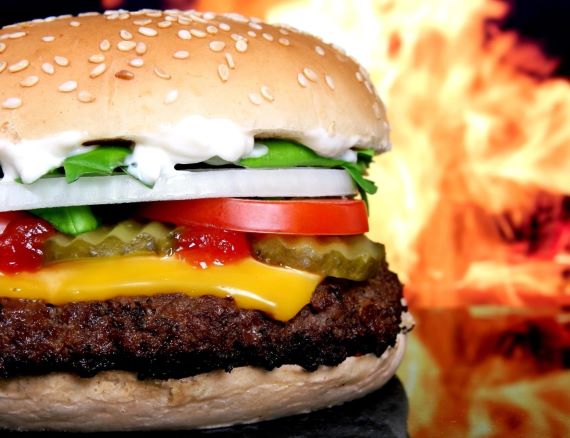
I had fun writing this essay with my son.
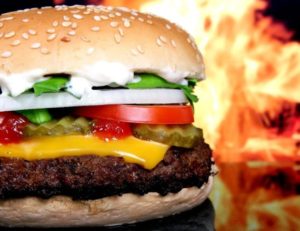
Hamburgers and cheeseburgers are part of the American way of life. Families across the country enjoy socializing and grilling burgers in their backyards or at the park. Visit the city, and you’ll see several restaurants that sell burgers lining the streets. We know why. It’s that juicy piece of ground beef slathered in cheese and ketchup with a slice of bacon or two calling our names: Jimmy, Tommy, Susie . That satisfying bite of bread with the perfect bacon-y crunch filling our mouths, the delicious flavor of a beautifully cooked beef patty with creamy cheddar, pepper jack, or Monterey jack cheese can bring us to our knees, especially if we wait too long to indulge. Some people like their burgers with lettuce and tomato, maybe a pickle or two, adding the perfect balance of cool crispness to the warm meat promising juicy, beefy wonderment. Though many believe differently, we all need to eat at least one cheeseburger a week.
Now that we’ve established that cheeseburgers taste good, (All of you can almost taste that juicy beef, right?) let me give you two more reasons why we all need to eat a genuine, fully-authentic cheeseburger, in all its beefy glory at least once a week.
First, iron. Red meat is a great source of iron. In fact, it’s such a great source, both Healthline.com and the Red Cross discuss beef as a way to increase your iron levels. Healthline.com’s Franziska Spritzler, a nutrition and dietitian expert, states, “Red meat is satisfying and nutritious. A 3.5-ounce (100-gram) serving of ground beef contains 2.7 mg of iron, which is 15% of the RDI.” (Spritzler) RDI stands for recommended daily intake . Basically, Franziska is telling us to eat at least a quarter-pounder a week. The day we do that, we meet roughly 15% of our recommended daily intake in a single sitting! Imagine eating that double quarter-pounder. Come on, I know you want it! 30% RDI here we come!
The Red Cross, takers of our rich, iron-filled blood, wants us to know that meats such as beef, fish, and poultry are rich in heme iron. About 30% of the heme iron, which comes from meat, is absorbed fast! Compare that rate to the rate of non-heme iron’s 2–10% that we absorb from nuts and dark green veggies, and…well, grab that burger! (American Red Cross)
Still, there’s that other reason we should eat a cheeseburger a week. How many of you crave incredible cheeseburgers in all their beefy goodness, but try to avoid them because you feel like you’ll lose control? Maybe eat one a day instead of one a week? Worse? Does anyone eat more than one a day? This is information you won’t want to ignore: scheduling a time to give in to your cravings helps you eat healthier! Sounds crazy, right? I know. But it isn’t. EatRight.com says, “A balanced eating plan that allows foods you enjoy — even high-fat, high-calorie foods — will be easier to maintain since you aren’t eliminating those foods outright from your life.” (Wolfram) When you eliminate the food you crave completely, those cravings become overwhelming. And if you give into them, watch out — you’ll become an overeating cheeseburger monster…the Hamburglar. We don’t want that, so schedule that cheeseburger craving. That’s what Gramma Jo did.
Who is Gramma Jo? Gramma Jo is perhaps the single, best grandmother anyone could have. Why? Lots of reasons, but mostly because she adopted Saturday night cheeseburgers. That’s right, my mother grew up eating a cheeseburger every single Saturday. Most of the time, they grilled them on the grill in the backyard, but after an especially exhausting Saturday on the lake, the whole family could usually be found at a local hamburger eatery. Better yet, Gramma Jo serves cheeseburgers every Christmas Eve. She understands the necessity of feeding the craving instead of the Hamburglar.
People against eating burgers will tell you they’re unhealthy. We’ve already proven they have a nutritional value when eaten occasionally as opposed to daily. However, there are still people who believe eating beef does a disservice to a cow. You’re killing it — that’s true. But, keep in mind, these cows are raised for the specific purpose of feeding hungry American teenagers. Now, if you worry about the treatment of the cow while it’s alive, don’t. You have a choice in the type of ground beef you purchase. Companies like the Arizona Grass Fed Beef Co. raise their cattle on free ranges with cowboys, just like in the olden days. Those cows are happy eating grasses, bushes, and the occasional flower right off the plain. They get more than that, too, they can enjoy the sun, the light breeze, and as much romping space and water as they can handle. When the trip to the slaughterhouse comes, cows trot in and death comes quickly, causing no pain. (Arizona Grass Raised Beef Co.) Another consideration, if you want that heme iron, something’s going to die, so you can choose — chicken, turkey, fish…cow.
Other than religious reasons, what shouldn’t you eat a cheeseburger once a week? Don’t believe the naysayers. Give in to what you know is right, be like Gramma Jo, grill it, fry it, buy it, however you get it, eat it. Eat a big, delicious, juicy cheeseburger topped with bacon and crisp veggies at least once a week. Relish the juicy flavor. Revel in its goodness. Get that important heme iron (that is so necessary for your health) straight from the steer. Something was going to die anyway. Feel the iron flow through your blood, pumping up your hemoglobin, rushing oxygen to your brain, heart, and stomach. You deserve it, we all do.
Laughter and social media shares are always appreciated!
Home — Essay Samples — Life — Burger
Essays on Burger
Myburgerlab ’s background, homemade hamburger and fries: my favorite meal, made-to-order essay as fast as you need it.
Each essay is customized to cater to your unique preferences
+ experts online
A Hamburger with a Side of Lies
Burger king and mcdonald’s: a report on the two biggest burger fast food chains in the world, culture and food: a research on hamburger, investigation of the ethics of a hamburger, let us write you an essay from scratch.
- 450+ experts on 30 subjects ready to help
- Custom essay delivered in as few as 3 hours
Little Tricks for Cooking a Tasty Hamburger
Reasons why there is no real meat in hamburgers, report on the analysis of the situation of hamburger restaurants, the way eating hamburgers helps to maintain your dream weight, relevant topics.
- Indian Cuisine
By clicking “Check Writers’ Offers”, you agree to our terms of service and privacy policy . We’ll occasionally send you promo and account related email
No need to pay just yet!
We use cookies to personalyze your web-site experience. By continuing we’ll assume you board with our cookie policy .
- Instructions Followed To The Letter
- Deadlines Met At Every Stage
- Unique And Plagiarism Free

Using the "Hamburger Method" to Write an Essay: Writing Paragraphs
- Planning the Essay
- Writing Paragraphs
The "Hamburger Method" can also be used to organize and develop your individual body paragraphs. Use the downloadable documents on the left to help you follow the instructions in the right-hand column.

The Function of Paragraphs
- Paragraphs are like a form of punctuation.
- They make written material easer to read.
- V isually, paragraphs are blocks of text parked with an indented first line.
- Functionally, paragraphs represent pieces of an essay.
Adapted from Harvey, Michael. The Nuts and Bolts of College Writing (Indianapolis, IN: Hackett Publishing, 2003)
The "Hamburger Method" of Arranging a Paragraph
- The "Hamburger Method" is just one way of organizing pragraphs.
- Understand your argument and what you wish to say to your reader.
- Decide on a sensible way to lay out the argument using a piece by piece arrangement to support, explain, and illuminate your argument.
- Stick to the plan by making sure each sentence fits with your plan.
- Topic Sentence: Like your thesis statement, the topic sentence tell your reader the context and framework of your paragraph.
- Detail Sentences: Provide the content of your paragraph.
- Conclusion Sentence: provides a brief summary or conclusion to your paragraph.
- << Previous: Planning the Essay
- Last Updated: Nov 25, 2023 12:41 AM
- URL: https://library.cdu.edu/hamburger-method
Lorem ipsum, dolor sit amet consectetur adipisicing elit. Minima voluptatum, soluta doloribus obcaecati eius ex, iure quas mollitia quaerat autem fugiat dolores animi. Optio fugiat quos, iusto id aperiam ut. Placeat similique natus fugit sequi saepe eius nisi ipsam? Saepe architecto id ducimus quaerat, quo ut autem aliquid ipsum vitae quibusdam, labore illo veniam cumque necessitatibus cupiditate dignissimos sunt illum?
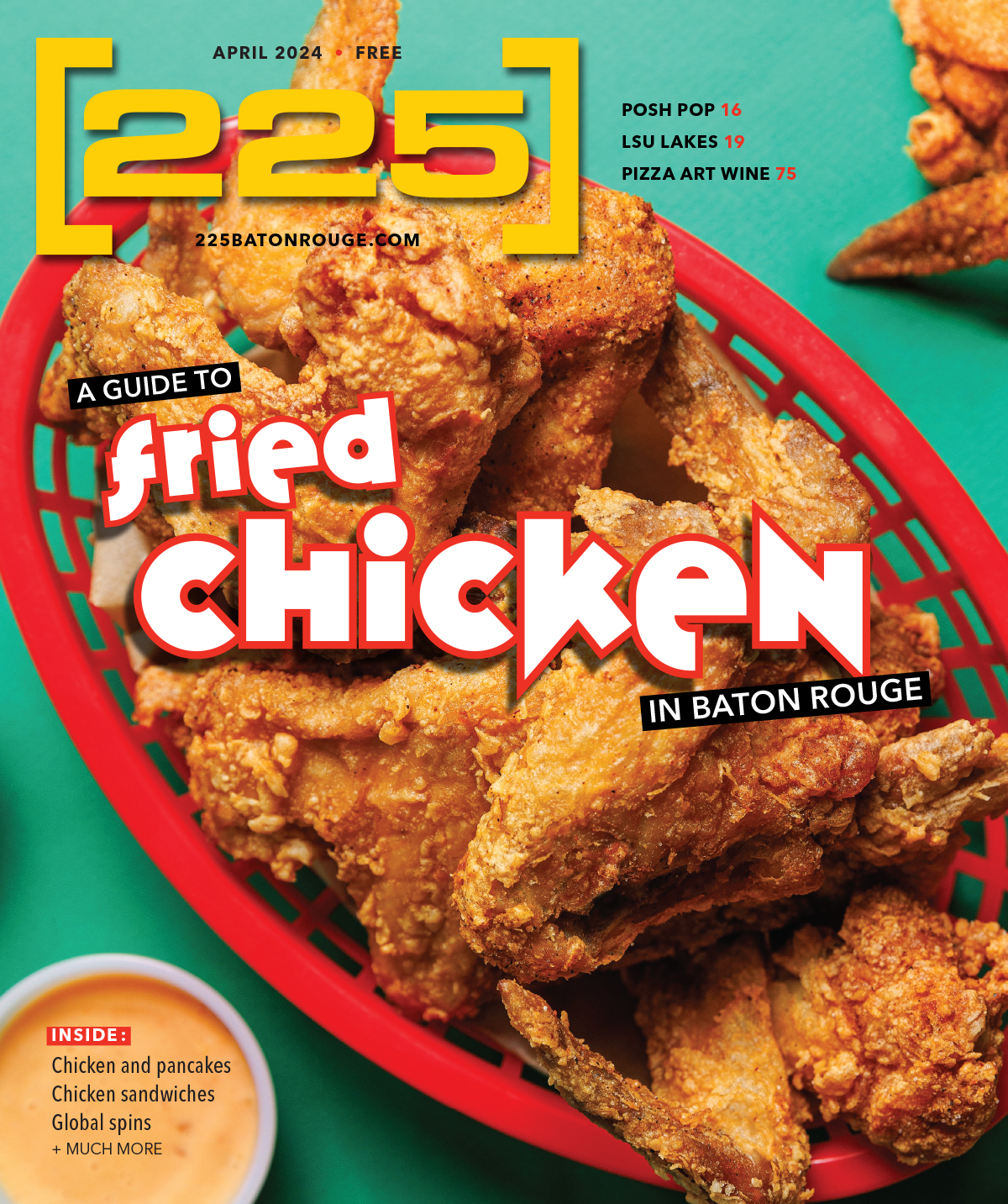
- PIZZA ART WINE

#225BATONROUGE
Freedom on a bun: An essay on the burger
- By Maggie Heyn Richardson
- February 27, 2015

Photo by Collin Richie
My 8-year-old has it right.
His favorite food isn’t chicken fingers or pepperoni pizza. It’s a warm and juicy hamburger grilled over charcoal and cooked to medium rare. All three major condiments are welcome. So is cheese. And sliced pickles? Keep ’em coming. Onions, lettuce and tomato will come later in his life. For now, this is the way he likes his burgers. We all have that way we like them.
In its pure form, a burger is about as uncomplicated as it gets, a simple A-B-A pattern of bread, meat and bread again interspersed with toppings. But these toppings, and the order in which they’re applied, are left solely up to the discretion of the one holding the plate. And that’s the beauty of this perfectly American dish: It is fundamentally about choice. Dress it up with truffle oil or eat it like a caveman minimalist. It’s wet clay, willing to be reinterpreted, reinvented or preserved. The ritual of dressing it is part of the magic.
Everyone has his or her own formula. My stepmother insists on mayonnaise on both sides of the bun, and I pity the poor line cook that can’t get this right. My uncle loathes ketchup, requiring only raw red onion and mustard. My kids love pickles, but they must be dill. I like to make sure that ketchup and mustard are squirted in the same quadrant so that they fuse and deliver a sweet-tangy punch. Others prefer to do the same with ketchup and mayo to make a kind of on-the-spot remoulade.
Major corporations have placed time and treasure into how best to dress a burger. Rick Newton, the now-retired owner-manager of Jay’s Bar-B-Q on South Sherwood Forest Boulevard (who once worked for Burger King), recently shared with me the formula for Whopper assembly, which he learned in the ’70s at a corporate training. Pickles, mustard and onions were always grouped together and placed on the bottom half of the bun, while mayonnaise, lettuce and tomato were applied to the top. Ketchup was at the buyer’s discretion. Newton deployed this same system at Jay’s in the ’80s, and it’s still the way the restaurant puts together its Hickory Burgers.
Personally, I like a lot of stuff on my burger. Give me crisp lettuce, fresh tomato, grilled onions, mushrooms, jalapenos, pickles of any kind and cheese. I love unpretentious burgers made with fatty chuck and squishy buns, but I also love a fussy slider with imported semisoft cheese and fig preserves. My favorite cut of meat, hands down, is the ground trimmings the butcher at Calandro’s returns to me every Christmas when I ask him to trim our beef tenderloin. The texture is unsurpassed.
But the truth is, I’ve yet to find a burger I didn’t like at least a little, even ones made on the cheap at ballparks or the filler-filled marvels of school cafeterias.
Because, in the end, a burger is an agreeable friend—a reliable buddy whose purpose is to make you happy, and who’ll let you dress it however you see fit.
This essay was published as part of our March 2015 issue’s “Extreme Burgers of the Capital City” cover story. Read more here.
Latest Stories

- 225 Magazine
- E-Newsletters
- Circulation
- Baton Rouge Business Report
- 10/12 Industry Report
- Leadership Academy
- Launch Media
- Welcome Visitors Guide
Our Company
- Melara Enterprises
- Privacy Policy
Mastering Lunch Service: Burger King’s Strategic Success
This essay about Burger King’s lunch service strategy explores how the fast-food giant optimizes its operations to cater to the midday dining rush. It highlights the early start of lunch service at 10:30 AM to accommodate a variety of customer schedules, reflecting Burger King’s commitment to flexibility and customer satisfaction. The discussion extends to the adaptation of Burger King’s menu in response to changing consumer preferences, including healthier options and the use of digital technology to enhance the dining experience. The essay also examines operational efficiencies, such as kitchen optimizations and staff training, which ensure high service standards during peak times. Through these strategies, Burger King not only meets the immediate needs of its customers but also positions itself as a forward-thinking brand in the fast-food industry.
How it works
In the swiftly evolving realm of quick-service eateries, comprehending the intricacies of midday operations holds paramount importance in upholding patron contentment and optimizing efficiency. Burger King, a behemoth within the fast-food sector, has deftly navigated the demands of lunchtime, employing a blend of conventional methodologies and pioneering approaches. This exposition delves into the temporal nuances of lunch provisions at Burger King, the influence of consumer inclinations on these provisions, and the chain’s adeptness in acclimatizing to the shifting dynamics of the fast-food milieu.
Burger King, akin to its industry counterparts, typically commences its midday service at 10:30 AM. This early initiation caters to the diverse schedules of clientele, accommodating both early lunch seekers and those desiring a belated breakfast option. The pliancy in meal offerings during this transitional phase underscores Burger King’s dedication to customer ease and gratification. However, temporal alignment merely constitutes a fragment of the equation. The composition of the lunch menu, inclusive of limited-time specials and the incorporation of healthier alternatives, mirrors broader trends in consumer preferences and dietary predilections.
In recent epochs, the fast-food sector has borne witness to a notable metamorphosis in consumer comportment. There has been an ascendant clamor for nutritious, premium food selections and a more personalized epicurean encounter. Burger King has heeded these trends by diversifying its midday menu, integrating plant-based alternatives, and prioritizing enhancements in food quality. For instance, the advent of the Impossible Whopper caters to the burgeoning vegetarian and health-conscious demographic, while periodic specials inject novelty and allure into the menu for habitual patrons.
Furthermore, the advent of digital innovation has revolutionized the modus operandi through which customers engage with fast-food chains during lunchtime. Burger King has embraced this digital zeitgeist through its mobile application, proffering functionalities such as pre-ordering and bespoke promotions, thereby mitigating wait durations and augmenting the holistic customer journey. This digital integration resonates with the lifestyles of a tech-proficient cohort that esteems convenience and expediency, particularly amidst the hectic lunchtime milieu.
Burger King’s lunchtime strategy also bespeaks a perspicacious apprehension of logistical and operational efficacy. Striking a balance between proffering an expansive array of menu items and ensuring expeditious service assumes pivotal importance during the lunchtime deluge. Optimization of kitchen layout, employee training regimens, and investment in technological infrastructure have constituted pivotal facets of Burger King’s modus operandi in upholding elevated service benchmarks during peak periods. These endeavors warrant that notwithstanding the surge in patronage, the caliber of service and victuals remains unwavering, thereby fortifying patron fidelity and brand cachet.
In summation, Burger King’s approach to midday provision epitomizes a multifaceted strategy that encompasses temporal synchronization, consumer vogues, and operational efficacy. By commencing midday service early, broadening the menu spectrum, embracing digital innovation, and streamlining operations, Burger King has positioned itself at the vanguard of the fast-food domain. These stratagems not only cater to the immediate exigencies of patrons but also position Burger King as a visionary brand that remains adaptable to prospective shifts in the fast-food landscape. As the sector continues its evolution, Burger King’s lunchtime paradigms are likely to endure as a benchmark for triumph and ingenuity.
Cite this page
Mastering Lunch Service: Burger King's Strategic Success. (2024, Apr 01). Retrieved from https://papersowl.com/examples/mastering-lunch-service-burger-kings-strategic-success/
"Mastering Lunch Service: Burger King's Strategic Success." PapersOwl.com , 1 Apr 2024, https://papersowl.com/examples/mastering-lunch-service-burger-kings-strategic-success/
PapersOwl.com. (2024). Mastering Lunch Service: Burger King's Strategic Success . [Online]. Available at: https://papersowl.com/examples/mastering-lunch-service-burger-kings-strategic-success/ [Accessed: 11 Apr. 2024]
"Mastering Lunch Service: Burger King's Strategic Success." PapersOwl.com, Apr 01, 2024. Accessed April 11, 2024. https://papersowl.com/examples/mastering-lunch-service-burger-kings-strategic-success/
"Mastering Lunch Service: Burger King's Strategic Success," PapersOwl.com , 01-Apr-2024. [Online]. Available: https://papersowl.com/examples/mastering-lunch-service-burger-kings-strategic-success/. [Accessed: 11-Apr-2024]
PapersOwl.com. (2024). Mastering Lunch Service: Burger King's Strategic Success . [Online]. Available at: https://papersowl.com/examples/mastering-lunch-service-burger-kings-strategic-success/ [Accessed: 11-Apr-2024]
Don't let plagiarism ruin your grade
Hire a writer to get a unique paper crafted to your needs.

Our writers will help you fix any mistakes and get an A+!
Please check your inbox.
You can order an original essay written according to your instructions.
Trusted by over 1 million students worldwide
1. Tell Us Your Requirements
2. Pick your perfect writer
3. Get Your Paper and Pay
Hi! I'm Amy, your personal assistant!
Don't know where to start? Give me your paper requirements and I connect you to an academic expert.
short deadlines
100% Plagiarism-Free
Certified writers

What Sandra Day O’Connor’s papers reveal about a landmark Supreme Court decision – and why it could be overturned soon
T he newly opened papers of the late Justice Sandra Day O’Connor reveal the internal deliberations of a groundbreaking Supreme Court case that gave US regulators significant latitude to protect the environment and public health – and show how the ruling almost never happened.
The 40-year-old milestone, Chevron USA v. Natural Resources Defense Council , has become a target of the current Supreme Court and appears likely to be rolled back in a pair of pending cases this term.
“Chevron deference,” as it is commonly called, generally requires judges to accept federal agencies’ interpretations of open-ended or vaguely worded statutes regarding their mandates. Conservative critics, including Justice Neil Gorsuch, believe it has led to excessive regulation of American business by executive branch agencies. Defenders of regulatory power, including the court’s three liberals, counter that agencies – with their focused expertise – are needed to safeguard public health and welfare.
More broadly, O’Connor’s contemporaneous notes now open at the Library of Congress offer a view into how nine justices communicate in private, revealing personal predilections and some exasperation as they negotiate against looming deadlines.
In the Chevron case, testing the protections of the Clean Air Act, the papers reveal an overall tentativeness among justices as they struggled with statutory intricacies and worked toward compromise while teetering on the loss of a quorum (only six of the nine justices were on the final tally).
Yet Chevron v. NRDC became a seminal opinion, cited in lower court opinions and law review articles more than just about any other case.
O’Connor’s archive reveals its tenuous beginnings.
“It shows the case came very, very close to not being heard by the court at all,” said Columbia University professor Thomas Merrill, an administrative law expert who has written extensively about the influence of the Chevron decision. “That compounds the ‘accidental landmark’ aspect of the case. It almost didn’t exist.”
Merrill has used that phrase as he’s referred to the little notice Chevron received when it was decided and how its importance grew over the years. The principle of agency deference was fortified by subsequent decisions at the DC Circuit US Court of Appeals, which specializes in regulatory disputes, and then reinforced by the high court itself.
Chevron’s impact on the so-called administrative state has particularly spurred critics. During January oral arguments in the pair of cases that could lead to reversal of Chevron this year, justices on the right-wing majority criticized the deference to agencies.
Gorsuch said the principle favors government over businesses as well as individuals challenging government policy. He referred to “the immigrant, the veteran seeking his benefits, the Social Security Disability applicant, who have no power to influence agencies” and contended in such instances, “ Chevron is exploited against the individual and in favor of the government.”
Justice Ketanji Brown Jackson, however, focused on the tension between judges and agencies to interpret statutory meaning, suggesting that the judiciary should not be in the position of effectively writing federal regulations.
“I see Chevron as doing the very important work of helping courts stay away from policymaking,” the liberal justice said. “I’m worried about the courts becoming uber-legislators.”
That sentiment echoed a concern of the late Justice John Paul Stevens, who wrote the Chevron opinion. “Judges are not experts in the field,” Stevens wrote in the 1984 case, adding, “The responsibilities for assessing the wisdom of such policy choices and resolving the struggle between competing views of the public interest are not judicial ones: Our Constitution vests such responsibilities in the political branches.”
The core Chevron principle now hanging in the balance holds that judges should defer to the agency’s construction of the statute if it is “reasonable,” and even if it differs from how judges might interpret the vague wording.
A case few wanted
The Chevron dispute began when the Reagan administration retrenched on standards for air quality and loosened state permitting requirements for new and expanded factories and power plants.
The legal question for the Supreme Court in 1984 was whether the permit process for a new “stationary source” – the phrase used in the amended Clean Air Act – required a plant-wide assessment or allowed each new pollution-emitting device to be treated separately. The Environmental Protection Agency, then run by Anne Gorsuch (the justice’s mother), said states were allowed to define “source” as meaning the entire plant, so any increase in pollution from one part of a plant, or device, could be offset by a decrease elsewhere in the plant.
After the Natural Resources Defense Council and other environmental groups sued, the DC Circuit US Court of Appeals agreed with environmentalists that the regulation conflicted with the statute and set it aside.
When the justices first looked at the Chevron appeal in spring 1983, they hesitated to get involved, according to the O’Connor papers, which enhance prior accounts in the papers of late justices. It took a while to muster the requisite four votes to even hear the case, and the number of justices who would be part of the ultimate resolution – a bare six justices – was in flux from the start.
Justice Lewis Powell thought his interest in one electric power company might require him to recuse himself. But after troubleshooting the matter, Powell found no reason to sit the case out, and on May 17, 1983, he sent a note to the clerk of the court, with copies to then-Chief Justice Warren Burger and O’Connor saying he’d be in.
Powell’s own archive at Washington and Lee University holds a note he wrote memorializing his recusal consideration: “As these cases involve an environmental law issue of some importance, and the parties probably number well into the hundreds, I have been concerned about a possible need to disqualify … I find that we already have carefully checked out this litigation, and I do not have to disqualify.”
Once Powell decided he could participate, however, he separately noted in his Chevron file that he was inclined to reject the industries’ appeal. Most of his colleagues were also ready to reject it.
According to O’Connor’s note from the first vote in the justices’ private conference in mid-May, only Justices Byron White and William Rehnquist wanted to grant the case. O’Connor offered a “join 3,” meaning she would provide the requisite fourth vote if three others wanted to hear the case. But there was no third vote at that point.
Powell asked that they all wait at least another week so he could continue mulling the dispute, and when the nine again voted at the end of the month, he was ready to provide a third vote. So, with O’Connor’s “join three” the case was accepted.
On the day of oral arguments, February 29, 1984, two justices happened to be out ill (Rehnquist and Thurgood Marshall). They both declined to participate in further deliberations on the case.
Writing the opinion
A decision in any case begins with a private vote in a justices-only session held in a small room off the chambers of the chief justice. Then the drafting begins, as an individual justice is designated to author the opinion for the court, fielding requested changes from colleagues and working to ensure that a majority holds.
The conversation typically plays out by memos circulated among the nine but sometimes a justice writing the main opinion makes a more personal appeal with a phone call or visit to another justice’s chambers.
In the justices-only conference after the Chevron oral arguments, the vote among the seven participating justices was a close 4-3. O’Connor recorded most of the justices as being tentative or “very shaky.”
She also appeared mildly irritated with Rehnquist’s withdrawal. He had been one of the bare-minimum votes to grant the case. O’Connor wrote on her tally sheet next to Rehnquist’s name: “out of case tho was one of 4 to grant!”
Differences over how to resolve the case did not fall along ideological lines, a contrast to the current polarization. Burger, a conservative, and Justice William Brennan, a liberal, were among the initial three dissenters, along with O’Connor, who disapproved of the EPA’s interpretation of the Clean Air Act.
Burger believed, according to O’Connor’s notes, that EPA had exceeded its authority in its new interpretation of anti-pollution coverage. “EPA construc goes pretty far,” she wrote as she captured his sentiment, short-handing the word “construction.”
Brennan, meanwhile, was irritated by the inconsistencies in statutory interpretation from the Jimmy Carter administration to Ronald Reagan administrations.
“EPA has changed directions, so not entitled to deference,” he said in the private session, according to O’Connor’s record. Her notes also suggest he wanted the court to tell EPA to pick a direction and be consistent.
The four justices who wanted to reverse the DC Circuit were White, Powell, Stevens and Harry Blackmun.
White, as the most senior justice of the four, asked Stevens to write the court’s opinion. Burger asked Brennan to write for the three dissenters.
The correspondence reveals Brennan’s reluctance to pen the dissenting opinion – and the overall lukewarm views of that side of the case.
“Dear Chief,” Brennan wrote Burger, with a copy to O’Connor, “I am willing to take on the dissent in this case but, particularly because we were all somewhat tentative in our votes at Conference, I hold out some hope that John will write an opinion for the court that will bring us together. I am presently in the process of drafting a letter to him on the matter. I would prefer, therefore, to take the assignment on a tentative basis and await John’s response before going forward with a dissent.”
Stevens’ files, opened last year at the Library of Congress, show that he resisted Brennan’s effort to bring more scrutiny to the EPA’s interpretation. In response to a March 6 letter from Brennan, Stevens said he had yet to draft the opinion but that he had tentatively concluded the statutory definition was sufficiently flexible to allow the EPA to take the plant-wide approach.
A few weeks later, Stevens warned Brennan that he was sure where he was headed and said it was likely Brennan would have to write a dissent.
“At long last I have found the time to get back into these cases and to begin work on a draft opinion,” Stevens wrote on May 23. “Since you wrote to me on March 6, in the hope that you might be able to escape the chore of writing a dissenting opinion if I could see my way clear to accepting your approach to the case, I thought I should let you know that I am now quite firmly persuaded that the Government is correct in arguing that the EPA’s interpretation of the term ‘source’ is permissible.”
“… In all events, I thought I should let you know that you probably will have to be writing a dissent in this fascinating case unless what I put on paper is more persuasive than my threat to make you undergo the punishment of the hurdle.”
Justices White, Blackmun and Powell remained with Stevens in the majority.
Brennan eventually had a change of heart. He asked for a relatively modest addition to Stevens’ opinion then signed on to his full reasoning and bottom-line favoring the EPA. (Stevens, writing in a 2019 memoir published shortly before his death, attributed Brennan’s switch to a personal visit Stevens made to Brennan’s chambers.)
That shift, which Brennan revealed in a note to O’Connor and all other colleagues on June 14, left O’Connor and Burger as the only dissenters in the Chevron case.
A surprise recusal
That very same day, June 14, O’Connor revealed a potential conflict of interest.
The justices decide on their own whether to recuse themselves from a case. Some recusal choices have become controversial, such as Justice Antonin Scalia’s 2004 decision to sit on a case involving then-Vice President Dick Cheney after going duck hunting with him.
A continuing point of controversy is Justice Clarence Thomas’ participation in cases related to Donald Trump’s refusal to accept the 2020 presidential election results and his supporters’ January 6, 2021, attack on the US Capitol. Thomas’ wife, Virginia, an ardent backer of the false narrative that Trump won the 2020 election, attended his rally on January 6 but did not march to the Capitol with other protesters.
Back in 1984, O’Connor’s recusal reasoning was kept private, although at the end of the decision it noted that she, Marshall and Rehnquist took no part in the decision. According to her June 14 once-confidential note to colleagues, she appears to have erred on the cautious side.
“I have reviewed the petitions for certiorari in these cases and discovered that I should be recused. Since the arguments were heard, my father died,” she wrote of her father, Harry Day, who ran the family’s Lazy B ranch in Arizona.
“His estate is still unsettled, but I will have a remainder interest in a trust to be established. His estate holds stock in at least one of the parties to this action and until it is settled, I think it best that I not participate,” she added.
That would have left Burger to dissent alone. But on June 18 he wrote a note to Stevens, with copies to the group.
“Dear John,” the chief wrote, “With others, I am now persuaded you have the correct answer to this case.”
The final June 25 decision was decided by a bare six-justice quorum. And unanimously.
For more CNN news and newsletters create an account at CNN.com

- Share full article
Advertisement
Supported by
Why Adams’s Campaign Strategy Involves Burger King and Baptisms at Rikers
Mayor Eric Adams keeps finding eye-catching ways to seize the spotlight on the issue of public safety, even when the narrative turns against him.

By Jeffery C. Mays
It was the day after a New York City police officer had been fatally shot in the line of duty and a man killed after being shoved onto the subway tracks , and Mayor Eric Adams had reached the end of a somber hourlong news conference.
He had spoken emotionally about the loss of the officer; blamed the two deaths on a system that he said left the city vulnerable to the effects of recidivism and mental illness; and sought to counter the narrative that New York had descended into chaos.
And now it was time for Burger King.
“Give me those two pictures from Burger King,” the mayor commanded, launching into an explanation for a recent unannounced visit to an outpost of the fast-food chain in Lower Manhattan that has attracted complaints for drug dealing. After some research and face-to-face conversations there, Mr. Adams concluded the complaints were unwarranted.
“I did something revolutionary,” he said. “I went to talk to them and said, ‘Who are you?’”
Earlier that morning, Mr. Adams had visited Rikers Island for another closed-press drop-in, and watched the baptisms of several detainees. Three days later, he returned to Rikers for his own rebaptism, with the Rev. Al Sharpton doing the honors that included a thorough washing of the mayor’s feet.
The visits were part of the mayor’s unorthodox messaging strategy as he prepares to run for re-election next year, and faces what seems likely to be a contested Democratic primary.
Many of Mr. Adams’s events seem to be rooted in political theater or old-time religion, and sometimes a combination of both: the baptism at Rikers; the drop-in at Burger King; accompanying the police on an early-morning raid targeting a major robbery ring. On Wednesday, he announced a “Five-Borough Multifaith Tour,” a series of conversations with clergy and faith leaders.
For the mayor, getting rebaptized at Rikers was a “fortifying ritual that makes sense to a lot of his base,” said Christina Greer, a political science professor who is currently a fellow at the City University of New York. She likened the rebaptism to his trip to Ghana , where he received a spiritual cleansing , shortly after he was elected in 2021.
“But I don’t know if that’s enough,” Ms. Greer added. “A lot of his base wants to know where the city is going.”
In the view of many New Yorkers, the city is pointed in the wrong direction . Mr. Adams has the lowest approval rating of any New York mayor since Quinnipiac University began conducting city polls in 1996.
His standing among Black registered voters, typically among his most steadfast supporters, has also dipped. In Quinnipiac’s December poll, 38 percent of Black voters disapproved of the way Mr. Adams was handling his job, up from 29 percent last February.
Recent front-page headlines in the city’s tabloids have contributed to the impression that the city is spinning out of control , as has the mayor’s own rhetoric.
But since December, he has repeated variations of a new city slogan — jobs are up, crimes are down — and said that New York was in fine shape.
“I know a city out of control,” he said last week. “I visit some of them in this country. This is not one of them.”
Yet the mayor has been selective about who hears that message. He has limited his interactions with the City Hall press corps to a single weekly news conference, typically held on Tuesdays. He prefers to conduct one-on-one interviews, often on radio and frequently on programs with significant Black and Latino audiences.
Late last week, the mayor faced off against one of his most ardent critics, Olayemi Olurin, a lawyer and a political commentator who hosts a YouTube show . The two appeared together on “The Breakfast Club,” a popular morning show on Power 105.1 FM co-hosted by the author and media host Charlamagne Tha God.
The result was a volatile, nearly hourlong debate over his public safety policies, which Ms. Olurin said were most damaging to the Black and Latino, poor and working-class people who helped elect Mr. Adams.
Frank Carone, the mayor’s former chief of staff, said he wasn’t surprised to see Mr. Adams in the studio across from a vocal opponent or being rebaptized at Rikers Island. The mayor is comfortable with dissonance, Mr. Carone said, especially around his signature issue of crime and public safety.
“He believes that he’s the one who runs into the fire and doesn’t run away from it,” Mr. Carone said. “In this case, the fire is the conversation on criminal justice and public safety. He’s trying to articulate that real leadership addresses both.”
Clips of Mr. Adams sparring with Ms. Olurin have garnered hundreds of thousands of views. She criticized the rise in stop-and-frisk encounters during his administration and the return of plainclothes police squads focused on recovering guns. She asserted that as the mayor highlighted the killing of the police officer in the line of duty , he had ignored civilians who have been killed by the police.
“We’ve had a tradition of overpolicing for generations,” Mr. Adams said, deflecting blame away from his administration.
“And it’s gotten worse now that you’re here,” Ms. Olurin shot back.
The criticism struck directly at the mayor’s core political identity: a Black New Yorker with working-class roots; a teenager who said he was beaten by the police, and who used the confrontation to propel him toward a police career that saw him rise to captain; a politician who understood firsthand how government needed to work for people.
But the policies of Mr. Adams’s administration, as Ms. Olurin noted, have not always reflected that.
During his time in office, the city has ramped up the use of policing tactics such as stop and frisk, and has conducted too many unlawful stops, according to a federal monitor. Complaints to the Civilian Complaint Review Board, which investigates police misconduct, are on the rise. The arrest and detention rates of young people have increased.
The long-troubled Rikers Island is in danger of being taken over by federal authorities and the mayor has questioned whether the jail can be closed by the legally mandated August 2027 deadline.
And Mr. Adams canceled $17 million in funding for programs on Rikers Island designed to prepare those same men he was baptized alongside to re-enter society. All but $3 million of the funding was restored, but new contracts must now go to bid, causing a delay in providing those services.
Sandy Nurse, a city councilwoman who represents Bushwick and Brownsville and leads the Council’s Committee on Criminal Justice, praised Mr. Adams for visiting Rikers. “As a Black man, as the second Black mayor of New York City, that’s important,” she said. “But it can’t just be visits with photographs. It has to come with material support.”
Ms. Olurin said in an interview that she was glad that she was able to challenge some of the mayor’s rhetoric on a Black platform like 105.1 FM radio, where Mr. Adams has appeared a handful of times.
“People got to see how he answers things and evades things,” she said. “A lot of the things his administration is doing are not defensible.”
Charlamagne said in an interview that he also believed that the city’s tendency toward overpolicing did not necessarily make people feel safer. “With stuff like stop and frisk, it increases the amount of encounters between Black and brown people and police officers, and a lot of times those don’t end well.”
He added that he did not tell Mr. Adams in advance that Ms. Olurin would be questioning him.
In his Tuesday news conference, Mr. Adams seemed to evade a question about whether he was prepared for the adversarial interview, or, as a reporter worded the question, “Did they kind of punk you?”
“Well, one thing for sure,” the mayor replied. “I’m not a punk.”
Emma G. Fitzsimmons and Dana Rubinstein contributed reporting.
Jeffery C. Mays is a Times reporter covering politics with a focus on New York City Hall. More about Jeffery C. Mays
Explore Our Coverage of the Adams Administration
Campaign Inquiry : Federal authorities investigating Mayor Eric Adams’s campaign fund-raising have been examining valuable flight upgrades they believe he received from Turkish Airlines that elevated him to its highest class of seats available on international trips.
Burger King and Baptisms: Adams keeps finding eye-catching ways to seize the spotlight on the issue of public safety , even when the narrative turns against him.
Gun-Detecting Technology: Adams announced that New York City planned to test technology to detect guns in its subway system as officials seek to make transit riders feel safe after a deadly shoving attack.
Grappling With Acts of Violence: Adams was recently confronted with two tragic events that crystallized some people’s persistent fears about the city: the shooting death of Police Officer Jonathan Diller and a man being fatally pushed into the path of a subway train in an unprovoked attack.
Sexual Misconduct Accusations: A woman has accused Adams in a lawsuit of asking her for oral sex in exchange for career help in 1993 and sexually assaulting her when she refused. Adams said the accusation was completely false .
The best things to do this weekend in San Diego: April 12-14

- Show more sharing options
- Copy Link URL Copied!
Here are some of the best things to do this weekend in San Diego from Friday, April 12 to Sunday, April 14.

Disney On Ice presents Mickey’s Search Party: Disney characters such as Tinker Bell, Captain Hook, Elsa, Miguel and Buzz Lightyear will take to the ice for a magic quest with Mickey Mouse. 7 p.m. Friday, 11 a.m.; 3 and 7 p.m. Saturday; 1 and 5 p.m. Sunday. Pechanga Arena San Diego, 3500 Sports Arena Blvd., San Diego. Tickets start at $20. disneyonice.com/mickeys-search-party/san-diego-ca-pechanga-arena-san-diego
“Brat”: Bocón theater company presents a new play by Wendy Maples inspired by the true stories of children who grow up in military families, who are known as “military brats.” The show will be presented in multiple locations, including at schools and on-base at Camp Pendleton. 7 p.m. tonight and Saturday at Light Box Theater, 2590 Truxtun Road, No. 205, Liberty Station. 7 p.m. April 26 at Trinity Theatre Co., Mission Valley mall, 1640 Camino Del Rio North, Suite 129, San Diego. Admission is free but reservations requested at tickettailor.com/events/bocon .
“Stew”: Scripps Ranch Theatre & Common Ground Theatre present Zora Howard’s 2021 Pulitzer Prize finalist play about three generations of Black women sharing stories, hopes and sorrows as they prepare stew for a church event. 7:30 p.m. Fridays and Saturdays; 2 p.m. Sundays. plus 2 p.m. April 20. Through April 21. Legler-Benbough Theatre, Alliant International University, 9783 Avenue of Nations, San Diego. $29-$49. (858) 578-7728, scrippsranchtheatre.org
“The Harvest”: OnStage Playhouse opens its 40th season with Samuel D. Hunter’s drama about a group of evangelical missionaries facing questions of faith, family and the future on the eve of a missionary trip to the Middle East. 8 p.m. today and Saturday; 5 p.m. Sunday. 291 Third Ave., Chula Vista. $15-$25. (619) 422-7787, onstageplayhouse.org
“Artistic Alchemy: Abstract Innovations”: Studio Door Gallery presents a group show of work by eight San Diego artists. Opening reception: 6-9 p.m. tonight. Runs through April 27. 3867 Fourth Ave., Hillcrest. thestudiodoor.com
Rose Muralikrishnan and the Muralikrishnans Carnatic Quartet: Center for World Music will present a concert of South Indian classical music. 7:30 p.m. tonight. La Jolla Community Center, 6811 La Jolla Blvd. $40-$55 . (619) 363-3007, centerforworldmusic.org
SDSU baseball white out game: The Aztecs will play UNLV and the first 500 fans will receive free rally towels. 6 p.m. Saturday. Tony Gwnn Stadium, Plaza Deportes, San Diego. ticketmaster.com/sdsu-aztec-baseball-tickets/artist/1548893?list_view=1&brand=sdathletics

Taste of Hillcrest: More than 25 Hillcrest restaurants will offer samples of food or drinks along a self-guided walking tour of the neighborhood. Participants can check in on the east side at the Hillcrest Business Association (1601 University Ave.) or on the west side at the US Bank building at Fifth and University avenues. Follow the orange and white balloons to find participating locations. Noon to 4 p.m. Saturday. Hillcrest. $40. fabuloushillcrest.com/taste-of-hillcrest
South Bay Earth Day: Ahead of Earth Day, this South Bay celebration features environmentally friendly, interactive activities. Bring small electronics that need repair to a fix-it clinic, participate in a tie-dye workshop and learn about composting. There will be an artist alley, food trucks, green vendors and a kids zone. 11 a.m. to 3 p.m. Saturday. Chula Vista Bayfront Park, 980 Marina Way, Chula Vista. Free. southbayearthday.com
Spring Art & Wine Walk: Art lovers can take a stroll among artistic displays in media such as ceramics, photography and painting. A wine garden will feature charcuterie, wine tasting and live acoustic music. 3 to 6 p.m. Saturday. The Forum Carlsbad, 1923 Calle Barcelona, Carlsbad. Free. theforumcarlsbad.com
Living with coyotes: Batiquitos Lagoon will put on a presentation on the natural history of coyotes led by Project Wildlife rehabilitation specialist Kelly Wallace. The talk will cover how coyotes are rehabilitated, their interaction with other predators and how best to coexist with them. The family event is geared to adults and kids, age 12 and older. Registration is required. 10 a.m. Saturday. Nature Center, 7380 Gabbiano Lane, Carlsbad. Free. batiquitoslagoon.org
Barrio Art Crawl: On the second Saturday of every month, the Barrio Logan community hosts an art crawl with special exhibits, food, shopping, live music and other activities celebrating Chicano art and culture. Noon to 8 p.m. Saturday. 2113 Logan Ave., San Diego. instagram.com/barrioartcrawl
Vegan festival: More than 80 vendors will be at the second annual San Diego Vegan Festival on Saturday This free-entry event will have close to 50 of those vendors selling various food, drinks and desserts at Waterfront Park. Some of the plant-based options will include burgers, cookies, cinnamon rolls, dumplings, lumpia, pizza, sushi and tacos. There will also be about 30 vendors selling artwork, clothing, hygiene products, jewelry and more. Other offerings for the day: panel discussions talking about vegan business ownership, vegan recipes and impact of animal rescues. 11 a.m. to 6 p.m. Saturday. 1600 Pacific Highway, San Diego. veganinsandiego.com/sdveganfest
Rolando Street Fair: This event celebrates the community of Rolando with live music, a kids zone, a beer garden and over 100 artists, local businesses and other vendors. Visitors can also enjoy food trucks. Bands will play throughout the day with the headliner Western Standard Time Ska Orchestra starting at 4:45 p.m. 10 a.m. to 6 p.m. Sunday. Rolando Boulevard. Free. $5 for all-day play in the kids zone. rolandocc.org/rolando-street-fair
Culinary festival: The 21st annual Celebrate the Craft returns to the Lodge at Torrey Pines on Sunday. This event showcases chefs, brewers, farmers, wineries and more, offering samples of various food and drinks. Chefs scheduled to attend include Roberto Alcocer, Aly Lyng and JoJo Ruiz. Some of the farmers and food producers at the event will be El Faro Seafood, Golden Door Farms and J.R. Organics Farm. 11:30 a.m. to 3 p.m. Sunday. 11480 North Torrey Pines Road, La Jolla. $250. lodgetorreypines.com/celebrate-the-craft
Bulls of Sant’Agata Charge Little Italy: This annual car show displays rare and classic Lamborghinis in the heart of Little Italy. Visitors can also enjoy live music while they check out the cars. 3:30 to 6:30 p.m. Sunday. India Street between West Fir and West Grape streets. littleitalysd.com/events/the-bulls-of-santagata-charge-little-italy
San Diego College Band Day: Bands from local colleges and universities will perform with interludes by Raul Prieto Ramirez on the organ. 11 a.m. to 3 p.m. Spreckels Organ Pavilion, 2125 Pan American E. Road, San Diego. Free. sdwinds.org/about-4
Duke Windsor ‘Reflections’ in the Gaslamp: Sparks Gallery is exhibiting a 30-year retrospective by San Diego painter Duke Windsor. The works in this show focus on Windsor’s local street scenes. Artist’s reception: 5-8 p.m. Sunday (RSVP required). Runs through April 30. 530 Sixth Ave., Gaslamp Quarter. sparksgallery.com
“Sirocco”: Cellist Abel Selaocoe & Manchester Collective present a diverse mix of African music, Danish folk songs and classical works. 7 p.m. Sunday. Baker-Baum Concert Hall, Conrad Prebys Performing Arts Center, 7600 Fay Ave., La Jolla. $43-$78. theconrad.org
Tifereth Israel Community Orchestra: TICO presents Shostakovich’s Symphony No. 5 and Beethoven’s Fifth Piano Concerto “The Emperor.” 3 p.m. Sunday; 7:30 p.m. Tuesday. Tifereth Israel Synagogue, 6660 Cowles Mountain Blvd., San Diego. $10-$25. tissd.org
More from this Author

San Diego Guides
The best things to do this week in San Diego: April 8-12
April 8, 2024

The best things to do this weekend in San Diego: April 5-7
April 3, 2024

The best things to do this week in San Diego: April 1-5
April 1, 2024

The best things to do this weekend in San Diego: March 29-31
March 27, 2024

The best things to do this week in San Diego: March 25-29
March 25, 2024
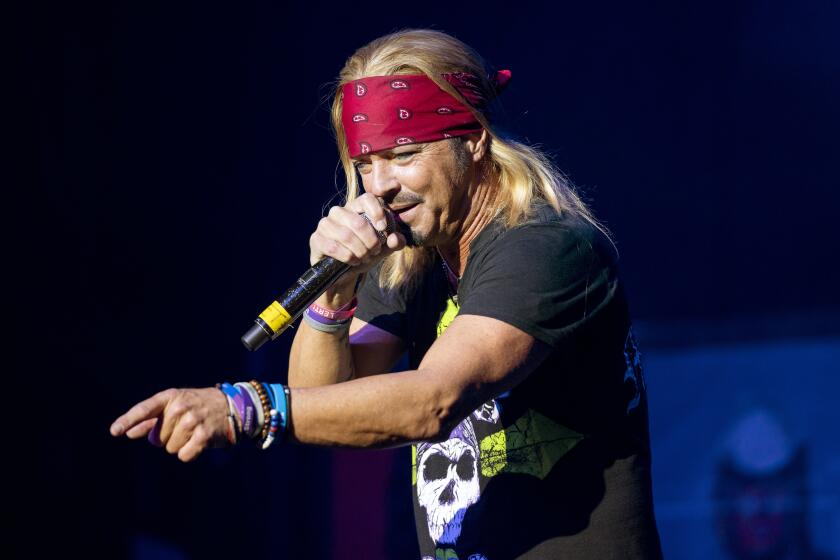
The best things to do this weekend in San Diego: March 21-24
March 20, 2024
More in this section
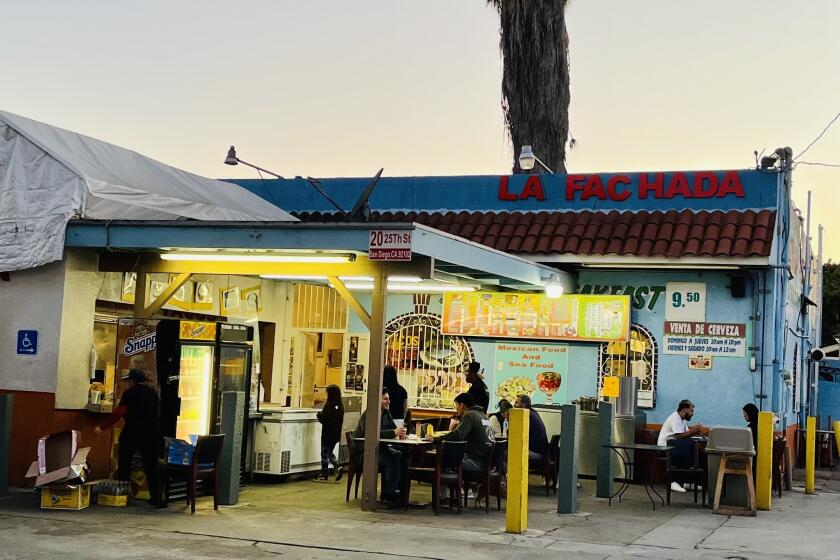
How to explore and eat your way through San Diego County on the Orange Line trolley
Ride the Orange Line trolley and find hidden gems or popular places to go out with family and friends, including a collectables store, Jamaican food and a late-night cocktail

Hike of the week: Explore tide pools on San Diego’s coastline at Cabrillo National Monument
Hikers can spot wildlife like sea anemone, coastal birds and beautiful native plants along this 1-mile picture-perfect trail

What flood victims need to know about applying for FEMA financial assistance
FEMA aid may assist residents in securing more long-term housing and fund rental assistance, home repairs and other costs incurred by flood damage

Enjoy views of the bay and iconic landmarks on this Cabrillo National Monument trail
Spot Ballast Point, the Coronado Bridge, San Diego Bay and even the mountains of Tijuana on the quick and easy Bayside Trail

How to watch and listen to the Padres on your TV, mobile device and computer and radio this season
Find several ways to watch and listen to all the San Diego Padres regular season games in 2024, with options for streaming and watching on tradition television
March 28, 2024

5 easy walks around San Diego County with pretty views
From the coast to the country, these simple walks and hikes highlight some of San Diego County’s most beautiful areas

IMAGES
VIDEO
COMMENTS
1. The top bun (a.k.a the introduction paragraph) The hamburger essay begins with a strong introduction paragraph (the top bun) that sets up the rest of the paper and presents the essay's primary thesis statement or argument. In high school, students are often taught to begin their introduction paragraph with the broadest or most general information first, and gradually narrow in on the ...
2. Add a detail as your tomato. The tomato is going to be a detail. A detail should some how connect with the topic sentence. An example is: "Allie is always there for me, no matter what." [2] 3. Layer on another detail as the cheese. The cheese is going to be another detail that connects with the topic sentence.
Hamburger Paragraph Template for Essay Writing. It almost sounds like something you might see on a menu at a fast-food restaurant, but a "hamburger paragraph" is a method of essay writing often taught in schools to help students structure their paragraphs effectively. Just as a burger consists of various layers that come together to create a satisfying whole, an essay is built up of ...
This burger was the winner of Denver 's A-List Best Burger in 2010. For the Las Vegas Sin City Smashburger includes a fried egg, apple wood smoked bacon, American cheese, grilled onions, haystack onions and smash sauce all served on an egg bun, this burger was named one of the top burgers of 2010 by the Las Vegas Weekly.
500 Words Essay on Burger What is a Burger? A burger is a popular food that many people enjoy. It is made of a cooked patty, usually round in shape, which is often made from beef. This patty is placed between two pieces of bread called a bun. The basic burger can be made more exciting by adding different toppings like cheese, lettuce, tomato ...
A paragraph is like a hamburger — they both have several layers. Use this graphic organizer to help build a juicy paragraph. 1. For the top layer, write the topic sentence that introduces the main idea. 2. Fill the middle layers with supporting details. 3. The bottom layer holds it all together with a conclusion sentence. Name: Date:
of academic paragraphs and essays with five main ingredients, but moving from the least-to-the-most important reasons: 1. The Top Bun (the Topic Sentence) 2. The Lettuce (the Least Important Reason) 3. The Tomato (the Next Most Important Reason) 4. The Meat (the Most Important Reason) 5. The Button Bun (the Conclusion)
Hamburger Essay. Decent Essays. 1005 Words. 5 Pages. Open Document. Big Tasty Hamburger At times when we are in a hurry, hamburgers are one of the easiest foods to eat while on the go. No matter what time it is whether its breakfast, lunch, or dinner we grab a hamburger and might throw in some fries and a soda to go with it.
The Hamburger Method starts with the top bun: the introductory paragraph and main point. Three paragraphs represented by the lettuce, the cheese, and the meat follow the first bun. These three paragraphs each cover a supporting argument to enhance the main point. The final paragraph, the bottom bun, restates the main argument of the essay.
In this Education Week video, a 4th grader describes an approach to essay writing used in many elementary classrooms across the country in which the image of a hamburger serves as a graphic organizer.
The introduction paragraph sets up up your essay by providing introductory information and essay's primary argument or THESIS STATEMENT. Begin with a "hook" to catch your reader's attention and then broad general information to introduce your topic. Narrow down your information and end your introduction with your thesis statement.
The Red Cross, takers of our rich, iron-filled blood, wants us to know that meats such as beef, fish, and poultry are rich in heme iron. About 30% of the heme iron, which comes from meat, is absorbed fast! Compare that rate to the rate of non-heme iron's 2-10% that we absorb from nuts and dark green veggies, and…well, grab that burger!
The "hamburger" essay method that is sometimes called the 5-paragraph essay or 1-3-1 model. The diagram to the left can help you easily remember the simple essay structure. ... Just like a real burger bun, these paragraphs frame the juicy contents inside - the body paragraphs - which are each represented by a different topping: lettuce ...
How to use the paragraph hamburger organizer. Discuss the three main components of a paragraph, or story: The introduction (top bun) The internal or supporting information (the filling) The conclusion (bottom bun) Ask students to write a topic sentence that clearly indicates what the whole paragraph is going to be about.
Essays on Burger . Essay examples. Essay topics. 10 essay samples found. Sort & filter. 1 Myburgerlab 's Background . 1 page / 416 words . MyBurgerLab, a brand famous with handmade burger patties and homemade charcoal buns that makes Malaysia feel glorious. Chin Ren Yi, 31 is founder of myBurgerLab where Teoh Wee Kiat, 23 and Cheah Chang Min ...
The jalapeño burger, the schnitzel burger, the Tex-Mex burger, the BBQ bacon burger, the Cordon Bleu burger, and the breakfast burger. Incorrigible. Notches on the burger bed post. The Wheel-In Diner. Post graduation. A goober burger. Peanut butter slathered on a bun, a burger, and your choice of toppings.
Functionally, paragraphs represent pieces of an essay. Adapted from Harvey, Michael. The Nuts and Bolts of College Writing (Indianapolis, IN: Hackett Publishing, 2003) The "Hamburger Method" of Arranging a Paragraph. The "Hamburger Method" is just one way of organizing pragraphs.
The burger is probably most often associated with urban life. This is not surprise me as it has become somewhat of a well-known fact in that great nation. However, the story of the creation of the burger (one of many stories) is that the burger was brought to America by German immigrants from (surprise, surprise) burger in the early years of ...
Do you know how to write a good paragraph in English? In this lesson, Mr. P. will show you how to produce an easy example paragraph and go over it step by st...
A quick and easy meal to prep, burgers are the perfect staple for creating memories with loved ones at a party, event, or dining room table. With so many varieties and choices to create the perfect patty, there is no risk of even the pickiest eater going hungry. A long and rich history. The idea of the hamburger has been around for centuries.
Burger - Free Essay Examples and Topic Ideas. A burger is a sandwich consisting of a cooked beef patty, often topped with cheese, lettuce, tomato, onion, pickles, and condiments such as ketchup, mustard, and mayonnaise. It is typically served on a bun and is a popular fast food item. Burgers can also be made with turkey, chicken, or vegetarian ...
Because, in the end, a burger is an agreeable friend—a reliable buddy whose purpose is to make you happy, and who'll let you dress it however you see fit. Maggie Heyn Richardson is author of Hungry for Louisiana, an Omnivore's Journey and a regular 225 contributor. Visit her at hungryforlouisiana.com and follow her on Twitter at @mhrwriter.
The Essay Burger. Introduction: Arouse the reader's interest by a shocking fact, by. addressing the reader or by a personal story. Give the thesis statement: Say what you are going to write about. Body Write about the theme introduced in the thesis statement. Put the paragraphs in a logical order.
This essay about Burger King's lunch service strategy explores how the fast-food giant optimizes its operations to cater to the midday dining rush. It highlights the early start of lunch service at 10:30 AM to accommodate a variety of customer schedules, reflecting Burger King's commitment to flexibility and customer satisfaction. ...
The newly opened papers of the late Justice Sandra Day O'Connor reveal the internal deliberations of a groundbreaking Supreme Court case that gave US regulators significant latitude to protect ...
Burger King and Baptisms: Adams keeps finding eye-catching ways to seize the spotlight on the issue of public safety, even when the narrative turns against him.
The newly opened papers of the late Justice Sandra Day O'Connor reveal the internal deliberations of a groundbreaking Supreme Court case that gave US regulators significant latitude to protect ...
Disney On Ice presents Mickey's Search Party: Disney characters such as Tinker Bell, Captain Hook, Elsa, Miguel and Buzz Lightyear will take to the ice for a magic quest with Mickey Mouse. 7 p.m ...